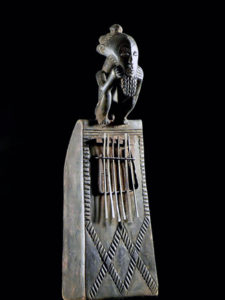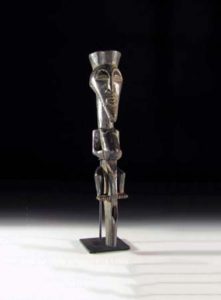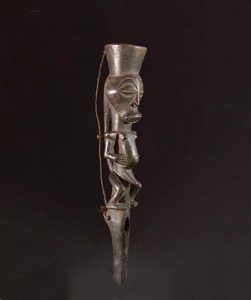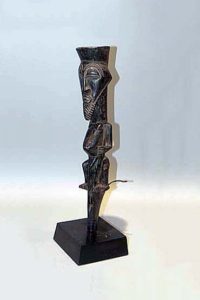Kusu
Kusu history is shared with the Nkutshu and Tetela, all of whom came from the northwest of their current location and share a Mongo-Kundu origin. Their first movement was southward, then they moved back north through Luba, Songye, and Hemba territory, acquiring social customs and learning artistic styles along the way. Once arrived in their new location they split into two major factions divided into north and south—they then further divided into smaller groups, which remain largely separated and independent to this day due to their geographic isolation. The groups in the south have been more influenced by the Songye and the Luba, which is evident in their sculpture styles.
Much of Kusu sculpture is comparable to their neighbors, from the Luba chief’s stools and Songye-like power figures, to the Hemba-influenced ancestor figures. Women also make pottery and basketry, which is used in everyday life.”
Kusu religious practice has been greatly influenced by their neighbors. They recognize Vilie (a supreme being) and share a common belief in the power of the ancestors, despite their geographical differences.
Source: “Kusu – Art & Life in Africa – The University of Iowa Museum of Art.” Art & Life in Africa – The University of Iowa Stanley Museum of Art, africa.uima.uiowa.edu/peoples/show/Kusu.




